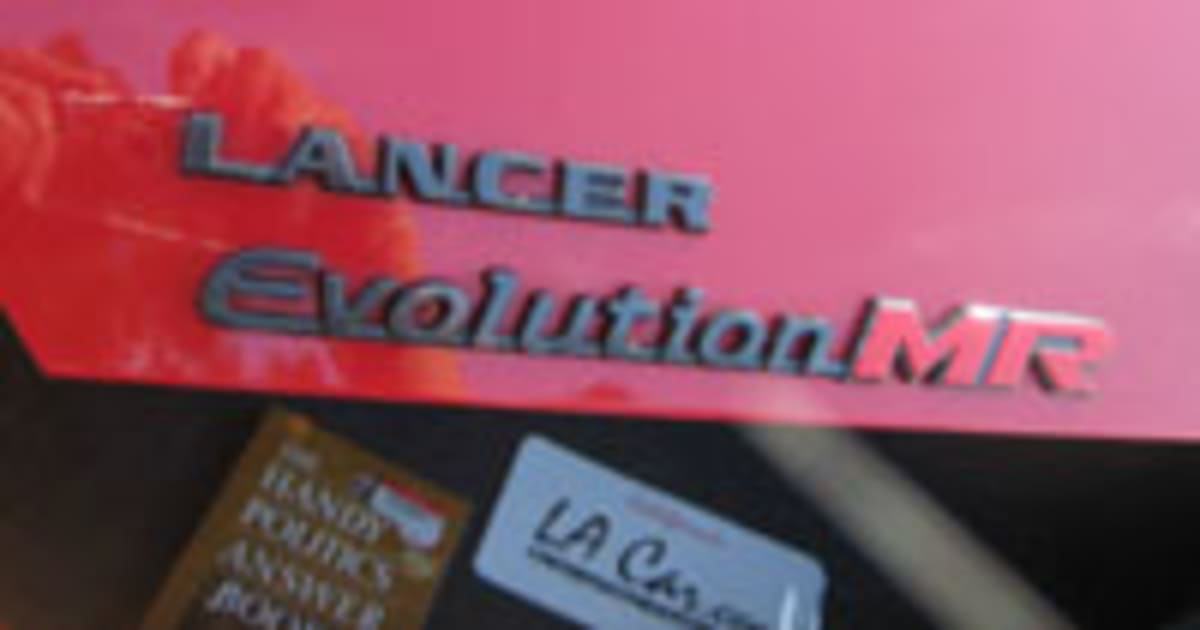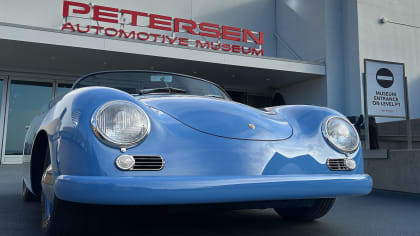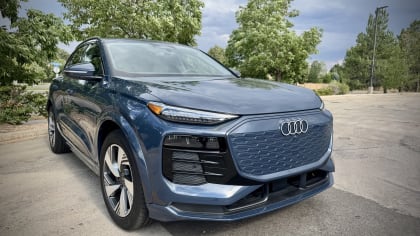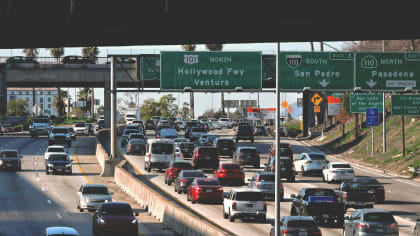BACK SEAT DRIVING - JANUARY 2007
This article is from our archives and has not been updated and integrated with our "new" site yet... Even so, it's still awesome - so keep reading!
Published on Sun, Dec 31, 2006
By: The LACar Editorial Staff
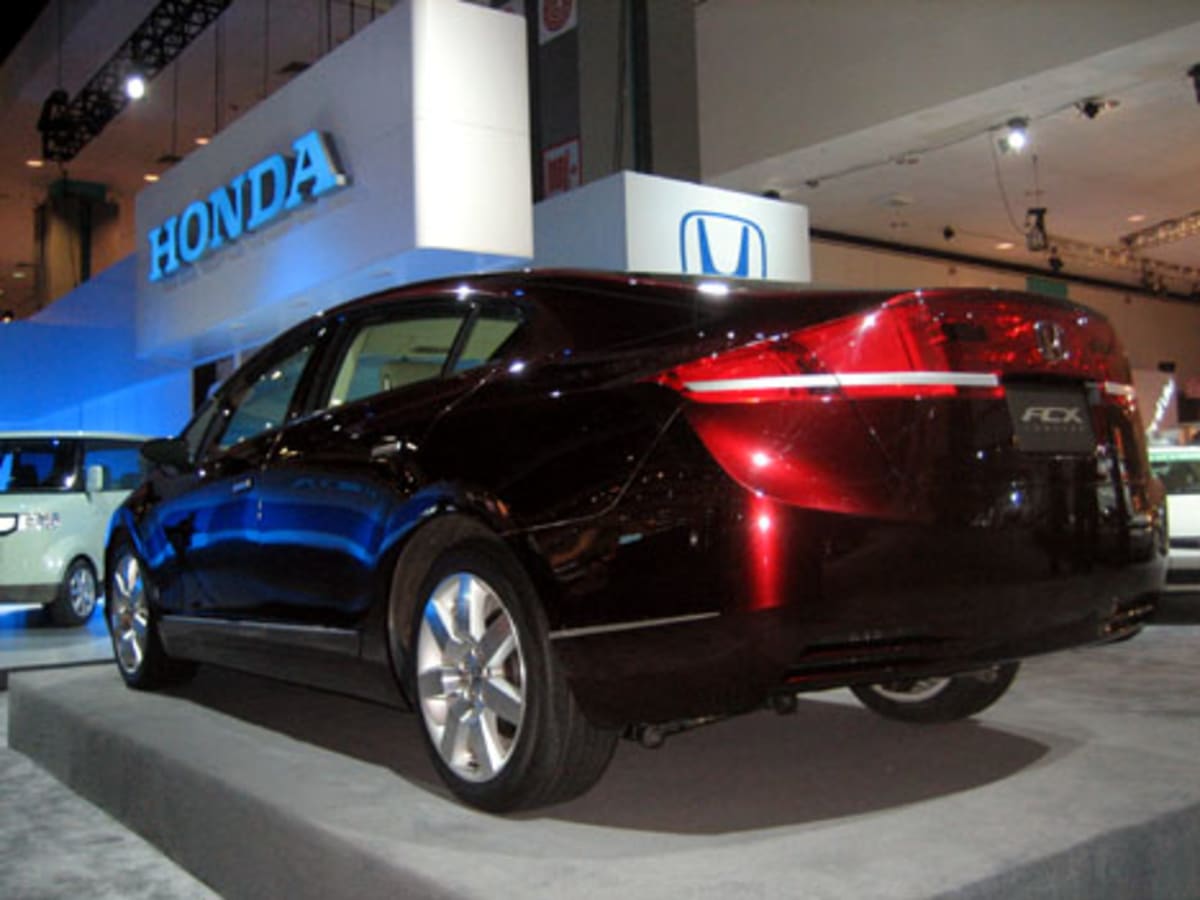
Honda FCX fuel cell concept car ROY NAKANO: BACK SEAT DRIVING HONDA SEEKS HIGHER U.S. VEHICLE FUEL STANDARD January 31, 2007 By Tom Doggett When it comes to the CAFE (corporate average fuel economy) standards, automotive manufacturers have traditionally lobbied against making the standards tougher. The industry usually avoids the argument heard from the flat-earthers - i.e., "higher gas mileage standards will make our vehicles more unsafe." The argument is more along the lines of being a burden on the industry or (the not invalid argument) that the market should decide. This week, the Honda Motor Company, Ltd broke ranks with the pack, becoming the first automotive manufacturer to publicly support higher CAFE standards. On January 30th, it said the U.S. government needs to do a better job of getting more fuel efficient vehicles on the road, including boosting gasoline mileage requirements and offering incentives so consumers want to buy cars and trucks that burn less fuel. "We believe it is time for the federal government to take action to improve vehicle economy," John German, manager of American Honda Motor Company's environmental and energy analysis division, said in written testimony to a Senate Energy Committee hearing on fuel efficiency in the U.S. transportation sector. "The average fuel economy of a passenger automobile is 27.5 miles per gallon, the same level it was in 1985, reports Tom Doggett of Reuters. "Energy experts say the only way to dramatically reduce U.S. reliance on foreign oil imports is to increase vehicle mileage requirements." The Japanese automaker evidently wants the U.S. Department of Transportation to increase the fuel economy requirements and has supported reforms to passenger car standards. German also urged lawmakers to draft legislation to reduce fuel demand. "At the same time, Congress should develop a program of broad, performance-based incentives to stimulate demand in the marketplace to purchase vehicles that meet the new requirements," said German. Senate Energy Committee Chairman Sen. Jeff Bingaman said the transportation sector is the leading consumer of energy in the United States and accounts for over 80 percent of the increase in forecast higher oil demand, reports Doggett. "Simply put, we are on an unsustainable path," German said. Honda's U.S. rivals oppose calls for new federal requirements to make their vehicles go further on a gallon of gas, reports Doggett. "The U.S. consumes almost 21 million barrels of oil a day, with three out of every five of those barrels imported. Gasoline use alone accounts for about 45 percent of daily petroleum demand." Your Back Seat Driving comments can be sent to: Letter to the Ed
ROY NAKANO: BACK SEAT DRIVING CONSUMER REPORTS RESPONDS TO INFANT SEAT ARTICLE BACKLASH January 26, 2007 LA Car reported on Consumer Union's decision to withdraw its controversial infant seat article that appears in the February 2007 issue of its publication, Consumer Reports (see January 21st Back Seat Driving entry below). Today, LA Car's executive editor received the following letter from Jim Guest, President of Consumer's Union: "By now, you've probably heard the news about my decision to withdraw the infant car seat report featured on ConsumerReports.org and in the February issue of Consumer Reports magazine. I took this action when we discovered a mistake in our side-impact crash tests. We always strive to be accurate and fair, and I regret this error. Going forward, I want to make sure that our actions are as thorough and transparent as possible so that we preserve your trust as we continue to test, inform, and protect consumers. To that end, I'm writing you and the millions of other Consumers Union members to tell you what I know about the situation and what we're doing about it. Here's what I know so far: One of our tests was intended to simulate how infant car seats perform in a side-impact crash at 38 mph. That's the speed at which many new vehicles are tested in side crashes by the government's auto safety agency. But upon reevaluating our data, we believe our tests simulated crashes that were much more severe than that. Some of the questions I've heard involve our use of an outside lab to conduct the crash tests. While the vast majority of product testing by Consumers Union occurs in our own labs, we sometimes use outside contractors that have special test equipment or other expertise that we don't. This enables us to inform you about the safety, reliability, and performance of important products that we couldn't otherwise test. That said, we expect all our testing to meet the same high standards, and our own staff oversees all projects. The board of directors and I are appointing a panel of experts to review this incident and determine what went wrong. We're also retesting the infant car seats featured in our article as thoroughly and quickly as possible, so that we can publish our findings and help parents who are making this important buying decision. I've directed that we suspend the article's Ratings and other recommendations regarding specific car-seat models until this retesting is completed. In any case, I again stress the importance of what we say in the article: Any child car seat is better than no seat at all. For 71 years, the staff of Consumers Union has worked hard to earn the trust of members like you and to build the stellar reputation we have enjoyed. We test more than 3,000 products each year, and errors like this one are rare. I apologize on behalf of Consumers Union and I promise you we're working hard to ensure that such an error does not happen again." Sincerely, Jim Guest President Your Back Seat Driving comments can be sent to: Letter to the Ed
JOHN GRAFMAN: BACK SEAT DRIVING REDUCING OUR DEPENDENCE ON OIL January 24, 2007 President Bush is calling for a dramatic reduction in U.S. gasoline consumption - by 20 percent in 10 years. Perhaps he has seen the light. Stop the press, or should I say, stop the president. Much like CAFE numbers that are lagging behind consumer sentiment, and thus are meaningless, a 20 percent reduction should be considered the minimum. George Bush did emphasis energy diversity, which is a wise choice. Dependence on foreign oil "leaves us vulnerable to hostile regimes, and to terrorists" is a no-brainer. However, putting too much stock into anyone source is ripe for disaster. Speaking of which, again the issue of fuel based on crops (and chips) is good only when the crop yield is good. Maybe nobody was thinking about it back in D.C. today when they had their breakfast this morning, but orange juice prices will be heading northbound very soon due to the devastating cold weather that destroyed much of California's annual orange crops. What if we also lost a crop yield we depend upon to power our cars? As an immediate relief that requires little to no new technology is diesel. No, not bio-diesel, but the regular petroleum-based stuff. We have the motors, and refining technology, and the infrastructure in place to deliver the product. This won't get us of the dependence on oil, but it will be a first and immediate step to push the Huns back to the gates. Diesel can stretch the most bang from every barrel of petrol, providing an immediate 30-or-so percent increase in mileage. It takes 25 percent more oil to produce a gallon of diesel, but diesel technology still represents a net improvement overall in reducing our dependence on oil. The latest motors are far cleaner than ever. A one-year waiver in some of our ever-increasing air quality standards would allow for the immediate implementation of diesel motors. The dirty little secret is that the modern diesel motors produce very little soot compared with their predecessors. Second, pass the bill to allow tapping some of the areas we have marked as off limits for the time being. This is a national security issue. The vote was shot down last time around in congress by just one vote! The freedom we enjoy as Americans is maybe no better captured than by the automobile. Mobility provided by cars allows us to be who we want to be, and move about without restriction. Our country's founders would have appreciated many of the attributes this product allows. How ironic though, the car rose in popularity over the horse as the car was faster and polluted less than the horse (well, it produced a different byproduct, if you get my drift). Today, we travel on the freeway at breakneck speeds of ten miles per hour in traffic, and we still have problems with pollution. Have we really progressed that far over the last one hundred years? Maybe if we lived closer to work and commuted less, the problems we have would work themselves out. Traversing from one end of the city to the other, or from one county to another, day in and day out, for work is simply a waste of fuel. We need to have a shorter commute in the public's interest, and in the interest of national security. Seeing the junior senator Hillary Clinton looking smug in the field of politicians I can't help but think of what her response might be. Maybe this: Not only does it take a village, it takes a much smaller village! Your Back Seat Driving comments can be sent to: Letter to the Ed
ROY NAKANO: BACK SEAT DRIVING CONSUMER REPORTS WITHDRAWS INFANT CAR SEAT REPORT January 21, 2007 For its February 2007 issue, Consumer Reports dropped a bombshell: "Most infant car seats fail our new front- and side-crash tests." And then another bombshell: Consumer Reports is withdrawing its recent report on infant car seats pending further tests of the performance of those seats in side-impact collisions. "We withdrew the report immediately upon discovering a substantive issue that may have affected the original test results," says the official press release from Consumers Union, the publisher of Consumer Reports. The issue came to light based on new information received Tuesday night and Wednesday morning from the National Highway Traffic Safety Administration (NHTSA) concerning the speed at which our side-impact tests were conducted. The original study, published in the February issue of Consumer Reports, was aimed at discovering how infant seats performed in tests at speeds that match those used in the government's New Car Assessment Program (NCAP). This program tests most new vehicles in crashes at speeds of 35 mph for frontal impact and 38 mph for side impact. Child safety seats, in contrast, are currently tested only in front-impact crashes at speeds of 30 mph. "Our tests were intended to simulate side crashes at the NCAP speed of 38 mph. The new information raises a question about whether the tests accurately simulated that speed, however, so we are now reviewing our tests and the resulting article." "Consumer Reports withdrew the report after federal officials said the actual speed of the tests was nearly twice as high as the magazine reported, according to David Shepardson of the Detroit News Washington Burealu. The National Highway Traffic Safety Administration, the government arm that regulates auto safety, said Thursday that its own tests showed side-impact tests conducted by an outside lab for Consumer Reports were actually in excess of 70 miles per hour ## far above the 38.5 mph cited by the magazine. When NHTSA conducted its own 38.5 mph tests, all of the seats performed well. "They stayed in their bases as they should, instead of failing dramatically," NHTSA's administrator Nicole Nason said. Magazine spokesman Ken Weine said the magazine would conduct "an internal review of all aspects of the story," reports Shepardson. "The Detroit News has learned that Consumer Reports used an established crash test lab, Calspan, based near Buffalo, N.Y., to conduct the child safety seat tests. The lab also does a significant amount of testing for NHTSA, although it doesn't test child seats for the government. What isn't clear is who made the mistake in the faulty testing: the lab or the magazine." Consumers Union is a nonprofit group that has combined subscriptions of more than seven million for its publication. Consumer Reports accepts no advertising, and this is largely responsible for the publication's sterling reputation for objectivity. That reputation looks to be tarnished by this latest development. I won't be entirely surprised if some people lose their jobs over this. Your Back Seat Driving comments can be sent to: Letter to the Ed

Hybrid trio ROY NAKANO: BACK SEAT DRIVING INTELLICHOICE SAYS HYBRIDS SAVE MONEY AFTER ALL January 17, 2007 There has been much discussion about the cost-effectiveness of hybrids. Many have argued that most hybrids won't save owners enough money on fuel alone to make up for their higher initial prices. A new study by Los Angeles-based Intellichoice.com, which specializes in automotive cost-of-ownership data, says hybrid vehicles are proof of the old saw that you've got to spend money to save it. "Hybrid buyers are still the winners when you factor in costs of financing, fuel, insurance, state taxes and license fees, repairs, maintenance and depreciation," says James Bell, Intellichoice.com's publisher. "Across the board, we found that all 22 hybrid vehicles have a better total cost of ownership over five years or 70,000 miles than the vehicles they directly compete against." "Hybrids are proving themselves to be an excellent alternative for car buyers," Bell said. "Even when factoring in the additional upfront costs for their purchase, the long-term savings hybrids generate makes them a sensible and attractive purchase." There is no better example, the study says, than Toyota Motor Corp.'s Prius. The study concludes that a Prius owner over five years will save $13,408 over a similar-size sedan that is not a hybrid. Prius, the five-passenger mid-sized sedan, is the most popular of the 22 hybrid models on the market today. It accounted for about 43 percent of hybrid sales in the U.S. last year and for about 60 percent of all hybrid sales since its introduction in 2000. On average, sedans of similar size to the Prius (non-hybrid cars such as Toyota's own Camry, Honda Motor Co.'s Accord and Ford Motor Co.'s Taurus) cost motorists an average of $33,305 over the first five years of ownership, Intellichoice found. Costs for the Prius averaged $19,897. The difference, the study says, is that hybrids retain their value better than conventional vehicles, have moderate maintenance and repair costs and, of course, there are those lower fuel costs. Hybrids also benefit from federal tax credits, which this year can range from $250 to $1,950 but were as high as $3,150 in 2006. The study based its gasoline prices on last year's average national gas price of $2.26 a gallon. The average dollar savings may go up or down with the price of gasoline, the study pointed out, but the percentage difference in operating costs between the hybrids and non-hybrids would remain constant. Because they carry both an internal combustion engine and an electric motor, plus a lot of complex electronics and oversized banks of advanced technology batteries to make it all work, hybrid cars and trucks are more costly to buy than comparable non-hybrid vehicles. The hybrid price difference - or premium - can be as little as $1,000 to as much as $5,000 for some luxury models. The higher purchase prices have kept many people from considering hybrids. Demand for the vehicles peaked last summer, when regular gasoline prices topped $3.25 a gallon nationally, but has declined as gas prices have fallen. The hybrids with the biggest five-year savings after the Prius were the new Honda Civic sedan hybrid, the Toyota Highlander sport utility vehicle hybrid and the Ford Escape SUV hybrid, Bell said. A quartet of "mild hybrid" pickup trucks from General Motors Corp. provided the least cost benefit over five years of ownership, with five-year savings ranging from $2,940 to $3,463. A mild hybrid is one that doesn't have an electric drive system to augment the internal combustion engine. Instead, it uses its electric power to enable the conventional engine to shut down when the vehicle normally would be idling. A "full hybrid" system such as in the Prius uses electric drive to boost gas engine performance and to enable the conventional engine to shut down at idle. Most also enable the car or truck to run on all-electric power for short periods at low speeds. The Intellichoice study comes at a time that more automakers are adopting some sort of alternative fuel or power plant strategy to help meet increasingly strict environmental rules and to maintain competitiveness as fuel prices rise. In addition to gasoline-electric hybrids, many automakers are adding diesel engines, which can offer as much as 40 percent more fuel economy than similar-size gasoline engines and are much cleaner than in the past. Several major automakers also are working on development of hydrogen-burning internal combustion engines or electric vehicles that use a drive system powered by electricity produced in an onboard fuel cell by combining hydrogen and oxygen. Your Back Seat Driving comments can be sent to: Letter to the Ed
ROY NAKANO: BACK SEAT DRIVING GOVERNOR January 14, 2007 California Governor Arnold Schwarzenegger said he will ask regulators to require the state's petroleum refiners and gasoline sellers to cut by 10 percent the emissions of heat-trapping gases associated with the production and use of their products, according to Jennifer Steinhauer and Felicity Barringer of the New York Times. The order for cuts, which the governor wants completed by 2020, follows California's trademark pattern of hitching its environmental aspirations to its market muscle. "It also represents one of the first examples of a state or a national government regulating the fuel in its passenger vehicles as part of a strategy to reduce both emissions that contribute to climate change and dependence on foreign oil, say Steinhauer and Barringer. "Environmentalists expect the order to turbocharge the market demand for corn-based ethanol and biodiesel fuels, and for natural gas, and to jump-start the introduction of experimental fuels like cellulosic ethanol, which is made from plant waste or nonfood crops like switch grass or wood chips," say the NYT reporters. Your Back Seat Driving comments can be sent to: Letter to the Ed

ROY NAKANO: BACK SEAT DRIVING CAN VW GET ITS GROOVE BACK? January 12, 2007 Volkswagen announced that Dr. rer. pol. Wolfgang Bernhard, Chairman of the Volkswagen brand group and member of Volkswagen AG's Board of Management, will leave the Company by mutual agreement as of January 31, 2007 as part of the reorganization of responsibilities within the Volkswagen Group. The good doctor has been a member of Volkswagen AG's Board of Management since February 1, 2005; since May 2005, he has been responsible for the Volkswagen brand as Chairman of the brand group. Prof. Dr. Martin Winterkorn, who will take over the management of the Volkswagen brand group in addition to his present duties, said, "Dr. Bernhard had furthered the process of restructuring of the Company and hence increased the productivity of the Volkswagen brand." The announcement is not wholly unexpected, given that Dr. Bernhard was the right-hand man of ex-Volkswagen AG CEO Bernd Pischetsrieder, was axed just a couple of months ago. Pischetsrieder brought Bernhard, a former executive at DaimlerChrysler, into Volkswagen in October 2004 as part of his plan to cut costs at the automaker. Volkswagen hasn't exactly suffered from a lack of good products. Its GTI is an outstanding vehicle, having just been named Automobile magazine's car of the year. Its bread and butter Passat is as good as ever. Still, it seems the company is not quite in the groove the way it was back when the New Beetle was first introduced. VW's coolness factor has acquired a bit of tarnish. Marketing missteps and a few quality control gremlins have knocked the brand slightly off kilter. The ambitious plan to move VW up market ran into problems when the Americans couldn't be convince to spend $65,000 or more on a car with the VW logo. Why would it want to compete with three other German high end companies, when it has no competition as the affordable German car? The ignition coil problem that plagued the VW 1.8 turbo four certainly didn't help matters. Granted, the new Eos has one of the trickest convertible hardtops around. Still, one wonders why VW will tackle such a niche market over-saturated with competition, while abandoning one that they could have owned outright (the sport utility microbus market). One thing you have to give VW credit for: They never seem to build boring cars. Marketing missteps and the occasional quality issue aside, its vehicles always have character. It's no coincidence that the most popular automotive board on the Internet is not for Honda or Toyota owners, but in fact for Volkswagen owners (VWvortex.com). Given a choice, the quintessential Volkswagen owner will rather own an interesting car that may spend a few days in the shop than have to live 365 days a year in a 'reliable' but boring car. So long as the company focuses on its core values, it should have little difficulty getting its groove back. Your Back Seat Driving comments can be sent to: Letter to the Ed
ROY NAKANO: BACK SEAT DRIVING TOYOTA SETTLES CLASS-ACTION LAWSUIT OVER OIL SLUDGE January 9, 2007 I've often criticized the automotive press for acting too much like lap dogs for car manufacturers on issues relating to safety and the environment. At times, the gearhead press has almost sounded like a lobbying arm for the automotive industry. Well, excuse me while I now go into lap dog mode. The reason? Sludge. More specifically, the litigation surrounding oil sludge in the engines of certain Toyota products. Having reviewed the allegations, it's been my inclination that the fault lies with the consumer. The problem lies with Toyota's reputation for reliability and durability. When people ask me about Toyota Corollas, for instance, I warn them that the car will last a lot longer than they'll ever want it to. Unfortunately, some people think that they can get away with minimizing the maintenance on Toyotas (like forgetting about changing the oil). This brings us to the class-action lawsuit that covers about 3.5 million Toyota and Lexus vehicles that have allegedly been damaged by engine oil sludge. About 3.3 million Toyota vehicles are said to be susceptible to oil sludge, which can cause thousands of dollars in damage or require replacement of the engine. Complaints about sludged engines are not uncommon, but Toyota's troubles have been highlighted in light of its reputation for vehicle quality. Toyota insists the problem arises mainly when owners fail to change their oil frequently enough. The matter has apparently reached a settlement. Details of the settlement have been mailed to 7.5 million current and previous owners. Under the agreement, owners whose claims have been denied by Toyota may submit them to a third-party mediator at no cost for binding arbitration. The agreement does not find Toyota at fault. Toyota is putting its best spin on the matter: "The settlement validates the customer support program we implemented four years ago," says Toyota spokesperson Xavier Dominicis. "The terms of the program remain unchanged. There always was a way for customers to appeal our decision." According to Gary Gambel, a lawyer for the plaintiffs that sued Toyota, "The consumer only needs to show reasonable maintenance in terms of oil changes. You don't need to prove where the sludge came from, or explain your driving habits. If you have oil sludge, Toyota pays" the consumer. Your Back Seat Driving comments can be sent to: Letter to the Ed
ROY NAKANO: BACK SEAT DRIVING GM TAKES NORTH AMERICAN TRUCK AND CAR OF THE YEAR AWARDS January 7, 2007 DETROIT - General Motors started off the 2007 North American International Auto Show with a bang when its new full-size pickup, the Chevrolet Silverado, and its new midsize sedan, the Saturn Aura, won the North American Truck and Car of the Year awards. "I just want to go, 'YES!'," said Jill Lajdziak, Saturn vice president for sales, service and marketing, while she pumped her fist in the air. "Sometimes you have to speak from the heart. This is a great day for General Motors, for Chevrolet and for Saturn" Chevrolet General Manager Ed Peper was a little more restrained but also pleased as he accepted Chevrolet's award. "Inside, we have always felt we had the best truck, but this award validates those feelings," he said. The North American Car and Truck of the Year awards are voted by 49 independent journalists from the United States and Canada. Your Back Seat Driving comments can be sent to: Letter to the Ed
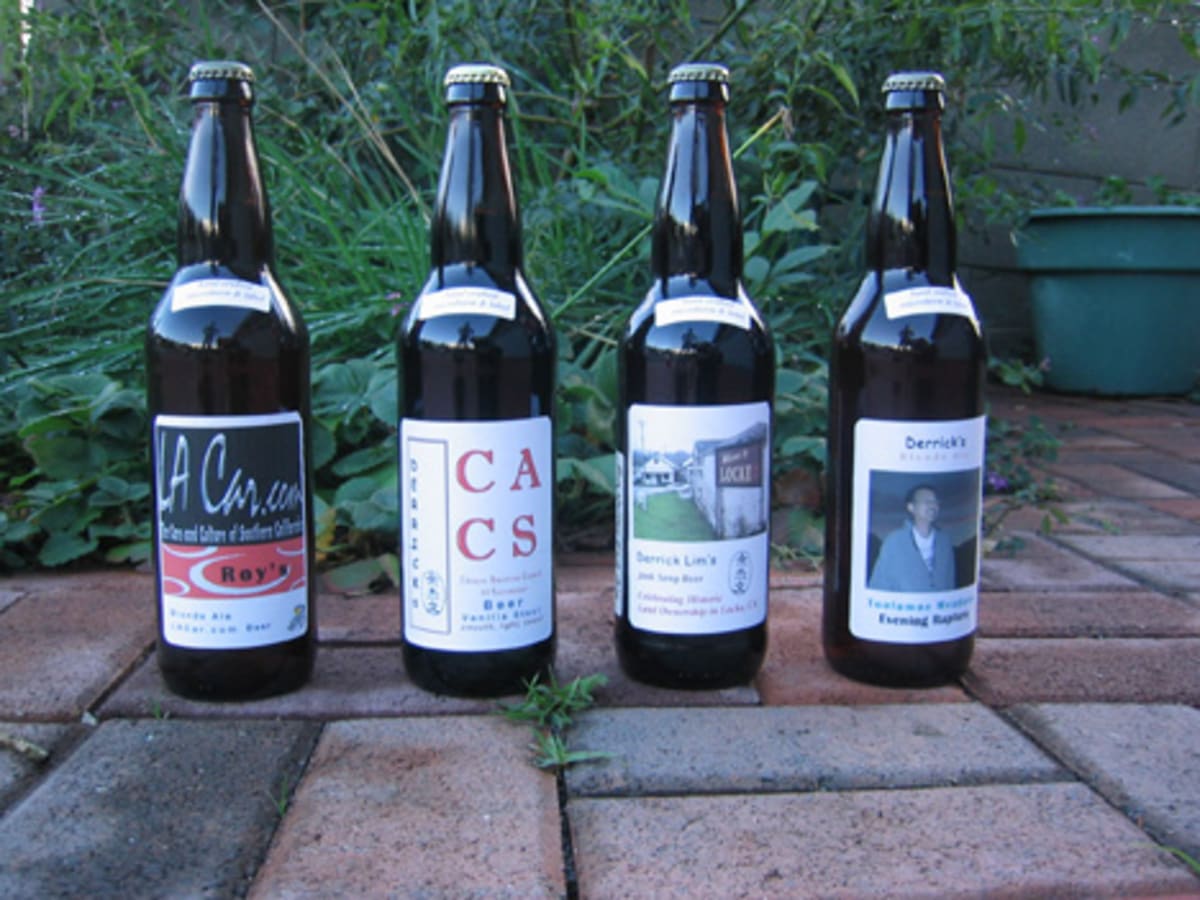

Leaving the scene of an accident (M:I:III) ROY NAKANO: BACK SEAT DRIVING NEW WAYS TO BREAK THE LAW January 2, 2007 "Don't be one of the unlucky motorists to get ticketed just because you didn't know about the change in laws," says LA Car's Reed Berry, otherwise known as The Traffic Guy. "Every new year brings new laws and changes, and 2007 is certainly no exception, says Reed. "Over $200 for the average speeding ticket, nearly $400 for running a red light, and if you pass a school bus while its red lights are flashing, whip out the checkbook and be prepared to pay nearly $600," says Berry. "The high prices may seem excessive, but think of it as 'behavior modification' for people who sometimes forget they share the road with others." Since 1988, The Traffic Guy has taught humor-based traffic violator school classes throughout Southern California and has served as keynote speaker at safety conferences across America. A recognized traffic safety expert, Reed's growing list of TV interview credits includes Fox News Channel, NHK News in Japan, Eye-to-Eye with Connie Chung, and BBC-TV in London. Reed was the co-creator and co-host of Traffic Jam (KRLA 1110 AM, Los Angeles). To see Reed's top 13 new ways to break the law, click here. Your Back Seat Driving comments can be sent to: Letter to the Ed

ROY NAKANO: BACK SEAT DRIVING DETROIT STILL HAS IT January 1, 2007 Detroit, Michigan. Yes, the city's automakers are getting a thumping from the Pacific Rim. Yes, the LA Auto Show is emerging as an international force. And yes, the show is surrounded knee-deep in snow. But when all is said and done, the North American International Auto Show in Detroit is the biggest auto show in, well, North America. This year is no different, with 69 vehicle introductions, and the biggest gathering of automotive journalists in the western hemisphere. As in years past, all eyes are on the Detroit show to see some of the most significant concepts and debuts. Even if you can't be in Detroit, there are virtual opportunities to see what's unveiled. Just about all the automotive manufacturers have set up live cams on the brand home pages so that you can witness what happens. It all starts on January 7th, and goes through the 21st. For more information on the show, see our coverage here. Your Back Seat Driving comments can be sent to: Letter to the Ed
A
JOURNAL OF LOS ANGELES & ITS CAR CULTURE That
was LA Car's subtitle when it started back in 1997. Since then, La Car
became LA Car. Its subtitle became
Reporting From Car Culture Ground Zero, then From The Heart of Car
Culture, to today's The Cars and Culture of Southern California. At
all times, however, we aimed to chronicle the Southland's spirit - much like
one's own
journal or diary.
Now, the diary section goes daily. LA Car has always been a great source
to come back to from week-to-week, to see what articles and reviews have been
added to our rather staggering database. With Back Seat Driving, a.k.a.
BSD (note the similarity to two well-worn abbreviations, BS and BFD) and Live
Wires - Hot & Tender News From the Car Culture (co-located with Back Seat
Driving, and updated at least daily), we give you a reason to
come back more often (all opinions, by the way, are those of the respective
author).
So, go
ahead and bookmark www.lacar.com. We'll be
sure to always provide a link to Live Wires and the latest Back Seat
Driving blog entry. In the meantime, welcome to the journal and journey into
the cars and culture of Southern California. - Roy Nakano For
past Blog entries, click the following:
December 2006
November 2006
October 2006
September 2006
August 2006
July 2006
June 2006
May 2006
April 2006
March 2006
February 2006
January 2006
December 2005
November 2005
October 2005
September 2005
August 2005
July 2005
June 2005
May 2005
April 2005
March 2005
February 2005
January 2005
December 2004
November 2004
October 2004
September 2004
August 2004
July 2004
June 2004
May 2004
April 2004
